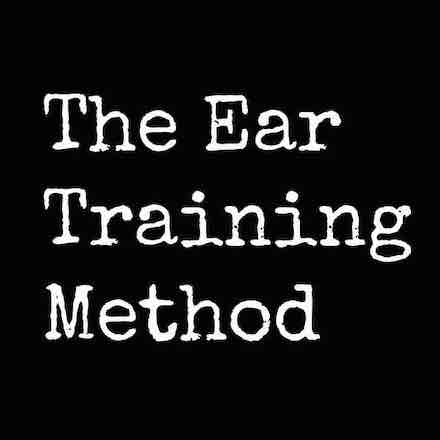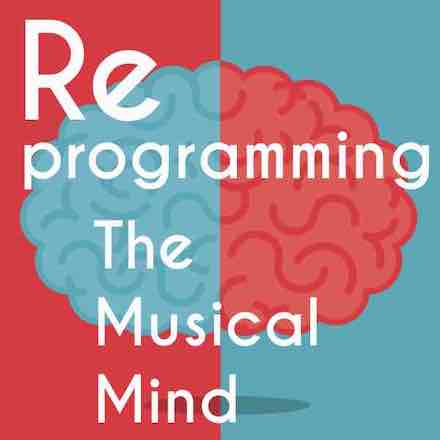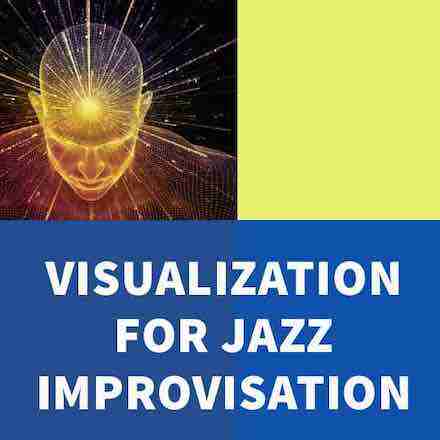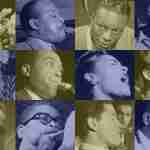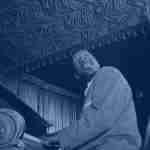Trust the process. Keep going and you’ll get there. Anything worth doing takes time. We hear these things over and over when we’re learning and it’s all good advice. But what they don’t tell you is that there’s one key thing that separates those who learn jazz fast, from those who get mildly better at playing jazz at a much slower rate.
So what is it? How do you learn jazz improvisation fast, something that seems nearly impossible when you realize how much information there is to know?
In a hurry to go nowhere
It’s late. I grab my horn and brave the cold to get to the practice rooms. Another solitary night in the practice room. I need to get there. I need to get there fast. There’s so much to know. What am I going to work on tonight? I’ve got to learn that tune, I think I printed out a chart. And perhaps I’ll work out of that transcription book a bit or maybe that new Bergonzi book I just got. And maybe I’ll spend some time on that new scale I just heard about.
This was me when I was 18. Frantically racing from one topic to the next, approaching them all in the wrong way. Printing out charts instead of learning tunes from records. Using transcription books instead of using my ear and transcribing solos. Buying literally every new book on improvisation, desperately hoping that it revealed the secrets I was missing. And doing endless work on scales and patterns.
Did any of this make me better? Sure. Practicing nearly anything you don’t know will make you better. But not fast and not significantly better.
And that’s what we want. We want to significantly improve at a fast rate.
The secret to learn jazz fast
In this video of Michael Brecker, he shares this secret but most people will overlook it and not think anything of it. Watch it and listen closely. Did you catch it? It happens at 1:50
Throughout this master-class, Brecker constantly says how he had no system to practicing, how he wasted a lot of time, how he’d work on something and then be lucky if he picked it up the next day, or remembered what he worked on because he has a terrible memory.
Despite all this wasted time and non-structured practice, how is it possible that he mastered the saxophone beyond what seems humanly possible?
“I try to practice things that are going to be practical”-Michael Brecker
There it is. That’s the secret to learning how to improvise fast: Practice things that are practical. It’s amazing how simple this seems in theory, yet how difficult it is in practice.
If everyone approached things this way, well we’d see a lot of people getting a lot better at things very quickly, yet, out of any group of people, only a handful of people seem to excel and the rest fall to the wayside. Why is it then that this idea of sticking to things that are practical alludes so many?
The rejection of the simple
The secret to getting good at just about anything whether it be jazz improvisation or a sport, is working on what’s practical, the things that you’ll actually encounter in the real live activity. The thing is, a lot of the time, the things that are practical are also simple, and for some reason, people often reject what is simple, brushing it off as incorrect or unimportant.
It’s as if people want things to be difficult. Perhaps the more difficult or complex something seems, the more valid and correct people believe it to be. Is there something psychological at play here? It reminds me of a story from the psychology book Influence:
…It was the peak of the tourist season, the (jewelry) store was unusually full of customers, the turquoise pieces were of good quality for the prices she was asking; yet they had not sold. My friend had attempted a couple of standard sales tricks to get them moving.
She tried calling attention to them by shifting their location to a more central display area; no luck. She even told her sales staff to “push” the items hard, again without success.
Finally, the night before leaving on an out-of-town buying trip, she scribbled an exasperated note to her head saleswoman, “Everything in this display case, price × ½” hoping just to be rid of the offending pieces, even if at a loss.
When she returned a few days later, she was not surprised to find that every article had been sold. She was shocked, though, to discover that, because the employee had read the “½” in her scrawled message as a “2,” the entire allotment had sold out at twice the original price!
In this case, people automatically assumed that a higher price, meant higher quality. While in some cases this is true, it’s not always true. It’s the same in learning. Yes, things that are complex or difficult may be of great value, but not necessarily more value than anything simple.
Actually, I’ve found that in learning most things, it’s almost always in mastering the simple stuff, the fundamentals, is where the real huge gains are, and where the practical stuff resides.
People want to believe things are more complex than they sound. They can’t be that simple of course!
In jazz improvisation, people gravitate toward techniques that have fancy names: triadic pairs, hexatonics, superimposition… While there may be great value in these concepts, this is not necessarily practical stuff for most people. These techniques are “nice-to-haves,” icing on the cake…but they’re not the bulk of what an improvisor needs to know.
If you have very strong jazz fundamentals, then you can add on bits and pieces here and there, so these things become more practical at that stage, but they’re still not the bulk of what will help you play a great solo on All the Things You Are or Rhythm changes.
The practical stuff in learning how to improvise tends to be simple. But, it’s simple theoretically and conceptually. In practice, it’s quite difficult. Take a major chord for example. To really play over a major chord, you need a lot more than a major scale. Many people think that if they know they’re G major scale that they they can play over a G major chord. Um, no. Not even close.
Most people do not sound great over major 7 chords, primarily because people brush them off as easy and rely on knowing the major scale as they’re only concept to approaching them. This is a perfect example of skipping over something that’s practical because you believe it to be too simple.
Playing well over major 7 chords is extremely practical because we encounter them in nearly every jazz standard we play. So, it would make great sense to learn how to approach them in a multitude of ways. Sounds simple, right? It’s not.
Developing language on a major chord and understanding the underlying logic of this language so you can create new language and ideas on major chords takes time, effort, and creativity. But, all this work will pay off. Why? Because it’s practical knowledge with practical applications that you’ll be able to use all the time.
Not knowing what’s practical when learning jazz
Now there is the case that you don’t know what’s practical or have never thought about it. This is very common as it’s fairly accepted that someone will tell you what to practice or what to think, and that’s that.
Unfortunately, the people you’re getting your information from could be leading you astray and you’d never know it. Or, they could be telling you exactly what you actually need, but without stopping and thinking about it, evaluating things for yourself, you really won’t know.
I remember searching non-stop, trying to figure out exactly what I should practice. I always thought there was some technique or exercise that I was missing that the professionals had, and if I only knew this exercise I could get to their level.
Even if I had an idea of something I should practice, I sought to validate this idea by finding a “professional” that supported it. I trusted exercises I found in books over my own intuition. I mean, it’s published in a book this must be the right way!
Here’s the problem with most books on jazz improvisation: they are the result of one person’s study, hence, they interpret, understand, conceptualize, and codify the ideas the way the author did, not the way you may have if you looked at the raw material yourself.
Because you’re learning information through someone else’s lens, it doesn’t truly mesh with you and it doesn’t end up helping you in the long run.
That’s the reason at Jazzadvice we focus more on process than techniques and material. Of course we still do share effective playing techniques and lines that we’re learning, but every time we do, and we say “Look how this line shows this awesome use of this concept,” well, it’s coming through our filter about how we interpret the material.
When you’re trying to discover what’s practical, don’t only look to the concepts people are sharing with you or teaching you, but look at how they got there, and then do that! If they transcribed a major line from Clifford Brown and then figured out how to build upon it in their own unique way, go find your own Clifford Brown line and build upon it using your own mind.
Now, that’s a great start, getting a level above the details people are passing along to you and seeing – really hearing – things through your own lens, but there are some super straight-forward ways to figure out what’s practical in terms of anything you want to learn.
How to figure out what’s practical in practicing jazz
To figure out what’s practical in anything you want to learn, the first step is to define the situations that you find yourself in time-and-time again during the real activity.
These are the keys to determining what’s practical and these are what you must simulate and study because any concept you’re learning needs to be able to be applied to these situations to make it useful.
If you’re just starting out, this might be a bit of a challenge, but as you attempt the activity more and more, it will become obvious what situations you tend to encounter. The important thing is to be aware of these and to take note of them. Are they actually situations that are common or are they one-offs? Are you conceptualizing the situation correctly or are there multiple ways to interpret it?
Ok, so say that you’ve been working on a blues for a while. What could you say about the situations you encounter?
- Playing over a dominant chord for 1-4 measures is common as in measure 1-4
- A dominant chord resolving down a fifth, G7 to C7 as in measure 4 to 5, is common
- You can approach a ii chord with a minor ii V as in measure 8 to 9
These are just a few, and if you don’t understand any of them, well, they’re through my lens and if you study the blues you may or may not view a blues like me. It reminds me of a time I was talking with tenor saxophonist Eric Alexander. I remember him telling me, “Anything I choose to tell you or not to tell you, I learned from transcribing.”
And the thing to remember, is that anything he chooses to share, comes through his lens. He always has a strong concept of what’s happening with the lines he transcribed. But, is this concept exactly what the performer he transcribed was thinking when they played it, or is his concept exactly the way that I’d view it if I would have transcribed the line myself? Maybe, maybe not. The point is, we extrapolate our own ideas of what’s happening when we study information for ourselves.
Even something like the chord changes to a blues are up for interpretation. Yes, I can think of at least a dozen ways to think about the chords of a blues, but each one would bring up most of the same situations that we find ourselves in over and over when playing jazz.
Practicing practical concepts to learn jazz fast
When playing jazz, there are a few situations that come to mind that we encounter over and over. While some of what we encounter is subjective, allowing the individual to interpret these situations how they see them, many of the situations are pretty standard:
- major 7 chords, often two beats, 1, 2 or 4 measures
- minor 7 chords, often two beats, 1, 2, 4, or 8 measures
- dominant 7 chords, often two beats, 1, 2 or 4 measures
- minor 7b5 chords (half diminished), often two beats or one measure
- diminshed chords, often two beats or one measure
- major ii Vs both one measure and two measures (|A- D7| and | A- | D7 |)
- minor ii Vs both one measure and two measures (|B-7b5 E7| and |B-7b5 | E7 |)
Of course there are more common scenarios the jazz musician will find themselves in, but these are some of the basic ones that make up probably 95% of what jazz standards are made of.
So, what’s practical?
Figuring out ways to effectively play over these chords and progressions for the specific durations they tend to occur, then finding them in the tunes you’re working on and applying the knowledge you’re learning to them.
You figure out ways to play over these scenarios through transcribing your heroes, studying composition, learning language, studying harmony, training your ear and paying attention to the voice inside your mind. And then you utilize your own creativity to morph, change, and build upon what you’re discovering; you can even create brand new concepts and lines. There are no rules.
And, you can work from the other direction, too: take the tunes you’re working on, find the common situations in the tunes or situations that are giving you trouble and figure out ways to deal with them.
For example, perhaps I’m working on the bridge to Rhythm Changes. I could start by finding some language for dominant chords that are two measures long…
Once I figure out how to apply that information, I could then work on each dominant chord resolving to the next dominant chord, so perhaps I rest for the first bar, figure out some language or concept to use in the second bar moving through to the third bar, rest for the fourth bar, then play over the fifth and sixth bars as before, rest for the 7th bar, and play over the eighth bar moving into the first measure of the last A section.
Practicing the bridge to Rhythm Changes is practical because I’m going to have to play over similar progressions over and over, dominant chords for two measures moving around the cycle. Dominant chords for two measure are super common and so is cycle movement.
If I can master this ONE situation, I’ve inadvertently mastered hundreds, maybe even thousands.
Define practical concepts for your style and goals
The more you play, the more you’ll think about chords, tunes, and chord progressions in your own unique way. That’s what I was talking about earlier; as in life, everyone has their own lens and it’s beneficial to you to define situations as you go, the way you see them.
For instance, maybe one person thinks they need ii V language like I mentioned in the list, but another likes to think of each chord separately as language for a minor chord and language for a dominant chord. Both are correct. And actually, I switch off between how I “view” chord progressions because thinking differently promotes different material to come out. So it’s advantageous to build up an arsenal of ideas for many situations.
Depending on your personal improvisational style and what you want to sound like, you’ll define some of the situations you encounter and what’s practical differently than other people.
There will still be a ton of overlap – you have to play over major chords, minor chords, dominant chords etc. There’s no way around it! These are the common scenarios that everyone playing this music needs to deal with. But, as you begin defining everything you encounter, you’ll see what I mean as in the multiple ways to think about a ii V example.
Everything you practice should be practical, it shouldn’t be some isolated exercise that somehow magically should affect some part of your improvisation. That’s not how things work.
Jazz improvisation is in the moment. With no time to think, the stuff that you practice for the situations you encounter is what comes out. If you didn’t define the situation correctly or didn’t practice specific ways to approach a particular situation that you encounter, then it’s going to show at performance time.
Not to worry. If this happens, take note of what situation you didn’t define correctly, failed to define at all, or didn’t have a specific approach for, and begin to study and build upon how your heroes dealt with something similar.
Every time you go to practice something, ask yourself, “Is this practical? Can I really use this in a situation that I encounter all the time? Will it help me over the things I’m not currently good at? Can I combine it with things I already know? On a scale from 1 to 10, how useful is it? Is it easy to conceptualize and apply to the tunes I’m performing all the time?”
Want to improve or learn jazz fast? The secret is simple:
- Practice stuff that you can directly apply to the situations that you find yourself in time-and-time again
- Build up an arsenal of approaches for each one of these unique situations
- Drill them until you’re blue in the face
If you practice things that are going to be practical, just as Michael Brecker did, knowing exactly when, where, and how to use them creatively, you will get good at jazz improvisation fast.

